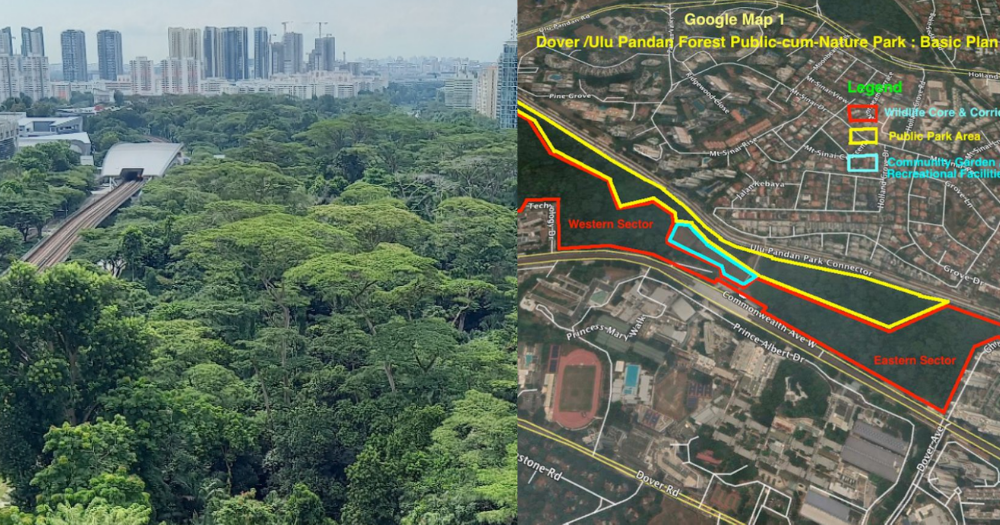The Dover forest that is adjacent to the Ulu Pandan Park Connector used to be abandoned kampungs and plantations.
It has since been turned into a huge patch of lush secondary forest after 40 years home to over 200 species of wildlife, including threatened ones, according to an environmental baseline study published by the Housing Development Board (HDB).
However, the study was done in view of upcoming housing plans that will replace the forest with high-rise residential buildings.
On HDB's website, Dover forest is known as the Ulu Pandan estate.
Nature Society feedback on housing plans
In a bid to safeguard this secondary forest and its wild inhabitants, the Nature Society Singapore's (NSS) conservation committee has made public its feedback to HDB in relation to the environmental baseline study on Dover Forest.
Members of the public are welcome to provide their feedback to HDB as well.
The feedback window which started last December will close on Jan. 16, 2021.
Threatened species in Dover forest
The 13-page feedback from NSS highlighted that there are actually more threatened species in the forest than what the study had found in 2017.
The committee also proposed for the 33-hectare forest to be turned into a park because the conservation significance of the forest revealed from the baseline study has become "very glaring".
In addition, the committee also offered alternative sites for housing projects.
Endangered species of birds in forest
In their feedback, NSS said the Dover forest used to be even bigger and part of it has already been subjected to development.
The remaining forest has since thrived, matured and the wildlife richness has increased "considerably".
The number of bird species has more than doubled over years, from 36 species recorded in 2007 to 82 species recorded in the baseline study.
NSS added that there are actually 21 more species inhabiting Dover forest, based on NSS's list.
While 12 bird species recorded in the baseline study are nationally near-threatened or threatened, NSS revealed that there are five more endangered species recorded based on their list.
Two species spotted in the forest are globally endangered — the Straw-headed Bulbul and the Long-tailed Parakeet.
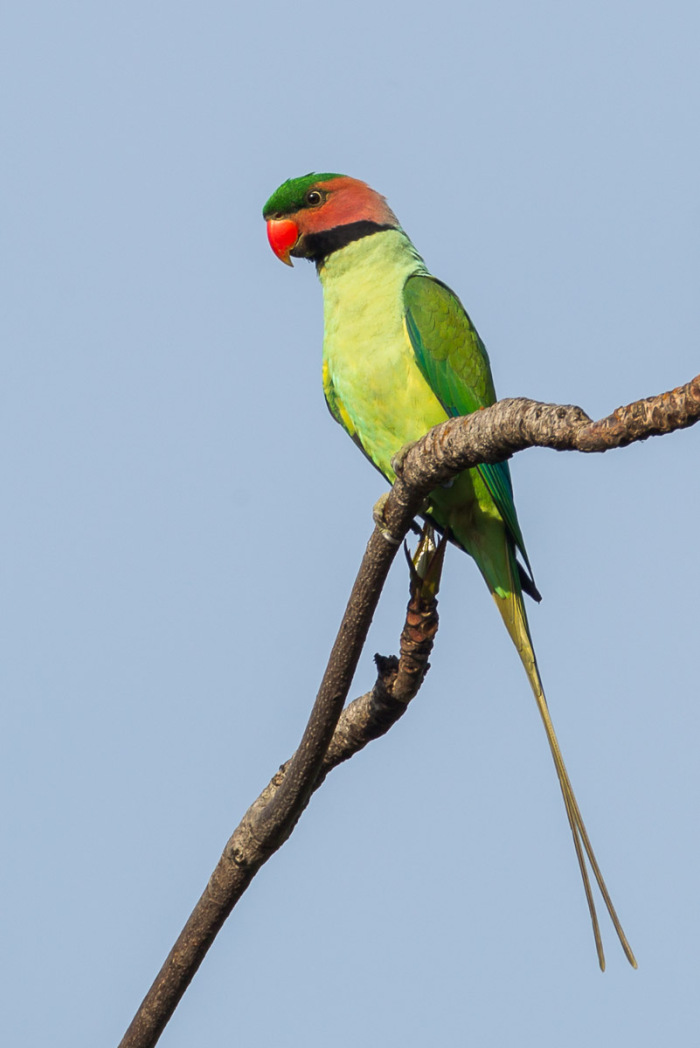 This is what a long-tailed parakeet looks like. Photo by Francis Yap via Singapore Birds Project. (Photo not taken at Dover forest)
This is what a long-tailed parakeet looks like. Photo by Francis Yap via Singapore Birds Project. (Photo not taken at Dover forest)
While the two species are thriving in Singapore, long-tailed parakeets are pretty common here.
NSS emphasised that their global populations are dwindling.
A total of 31 forest-dependent bird species have been spotted in Dover forest instead of 22 species, NSS added.
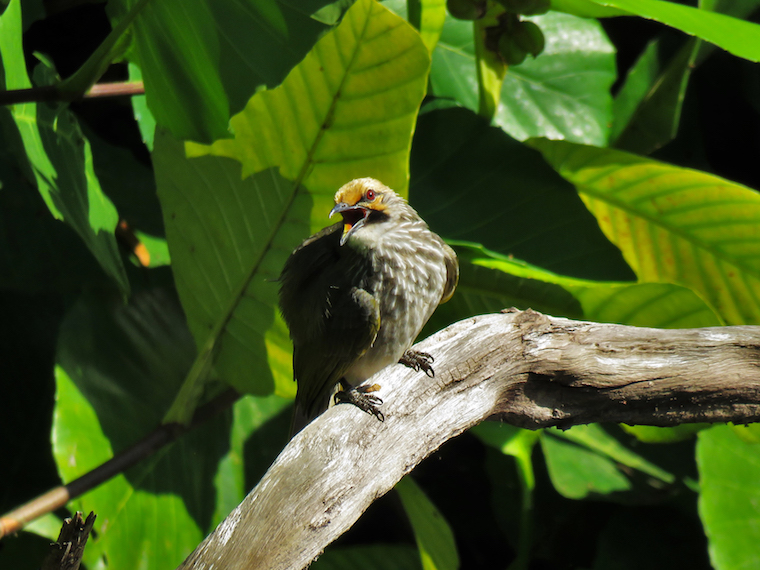 Here's what a straw-headed bulbul looks like. Its distinct call was heard in Dover forest before just in December 2020. This bird species is now critically-endangered; there are fewer than 1,500 left in the world as they have been heavily poached for songbird trade. Photo by Eilliot James Ong.
Here's what a straw-headed bulbul looks like. Its distinct call was heard in Dover forest before just in December 2020. This bird species is now critically-endangered; there are fewer than 1,500 left in the world as they have been heavily poached for songbird trade. Photo by Eilliot James Ong.
Due to limited time, the feedback strategically focuses on the bird species only.
The fact that birds are thriving in the Dover forest shows rich biodiversity at lower levels of the food chain.
Birds have varying diets ranging from honey, fruits and seeds, insects, reptiles, amphibians and mammals.
Ecological value
Besides being home to wildlife, Dover forest enhances the wildlife connectivity in the region.
Wildlife can use Dover forest as a "stepping stone" to a number of other green spaces, such as the mangrove area east of Pandan Reservoir, Bukit Timah Nature Reserve, Clementi forest and forests of the Southern Ridges.
The red arrows show how wild animals can use Dover forest to move to other forests:
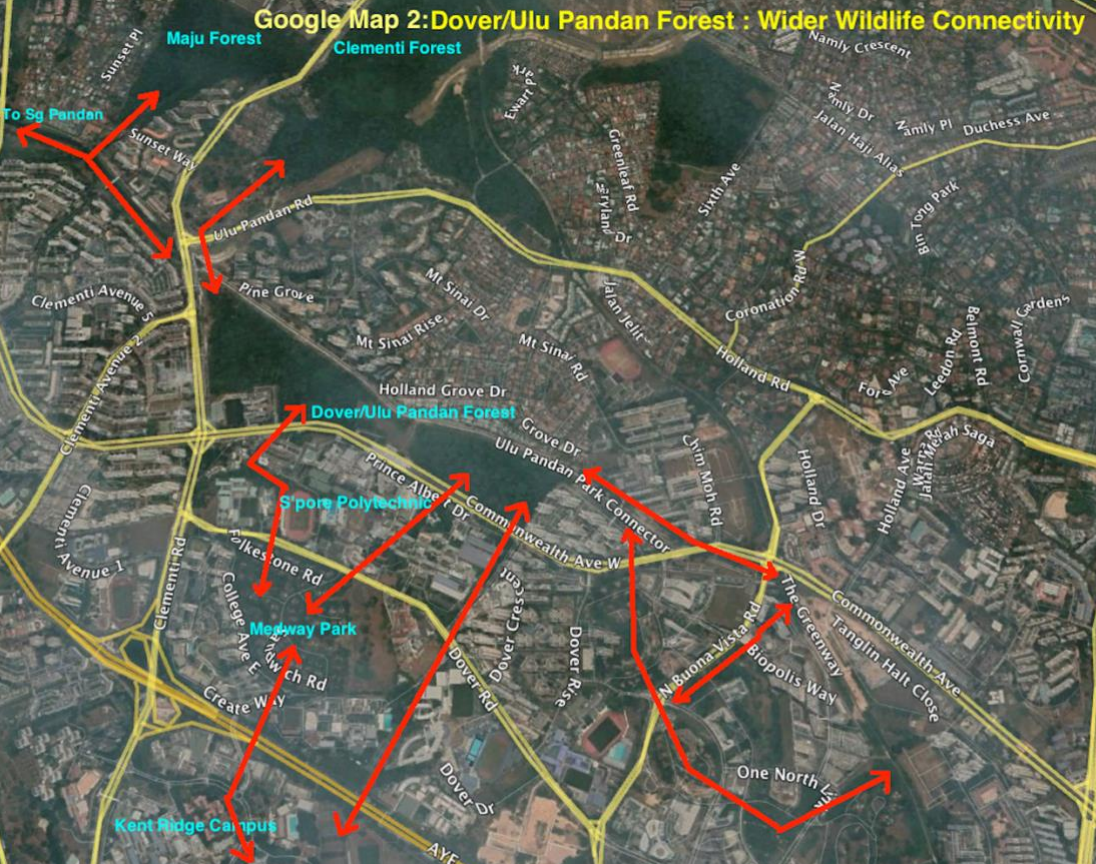
NSS said it believes that this explains the presence of the Straw headed Bulbul and Long-tailed Parakeet.
These birds, which come from other forests, could be foraging for food or searching for a new home in Dover forest.
A demand for more green recreational spaces
Besides the conservation and ecological value, NSS also said it believes that there is an "accelerated" demand for recreational greenery.
Streams of visitors have been observed at Central Catchment Nature Reserve’s Tree-Top Trail on weekends and people want to get close to nature for various benefits.
Another example that NSS cited is how an "astounding" number of people are flocking to Clementi forest recently.
Therefore, it is urgent to expand green spaces so that existing nature parks and reserves will not get eroded or degraded due to overuse.
Furthermore, there is a lack of a public park in that Dover/ Ulu Pandan estate.
NSS has counter-proposed the conservation of the entire Dover forest by turning it into a public and nature park.
Public park counter-proposal
The park will consist of three parts:
1) Wildlife core and corridor area,
2) Public park area and
3) Community garden and recreational facilities area.
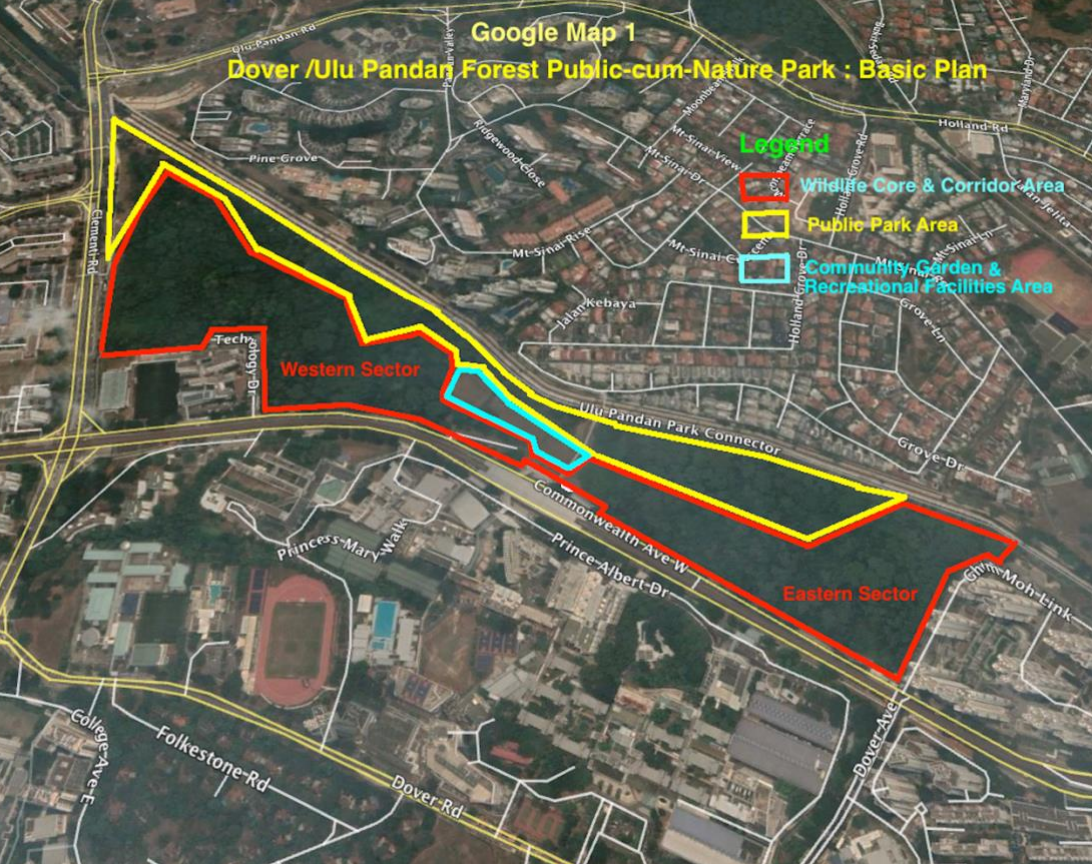
1) Wildlife core and corridor area
This part of the forest is relatively denser and further from human activity and noise.
Both western and eastern sectors of the forest will have a core area where endangered birds have been spotted using or residing within.
The core areas also consists of a freshwater stream running through the forest. The freshwater stream is an endangered wildlife habitat outside the existing nature reserves.
While this area should be left untouched, a trail can be created nearer to the northern boundary of the forest corridor for the public to enjoy a venturesome experience within the forest.
2) Public park area
Nearer to the park connector, the public park area can be developed for recreational and exercise purposes.
3) Community garden and recreational facilities area
A community garden area and other amenities, such as food courts for the public, can be created near Dover MRT station, NSS said.
While these two areas can be more manicured, there should be some shrubs or small trees planted to reduce the gap of wildlife connectivity between the two sectors of the forest.
Housing projects can use other open spaces and golf course
As part of the feedback, NSS also proposed three alternatives for housing projects to be carried out in Dover and Ulu Pandan:
- Open patch at the junction of Ghim Moh Road and Commonwealth Avenue West (about 3.5 hectares)
- Degazetted Warren Golf Course to the east of Medway Park (about 3.5 hectares)
- Open patch at the junction of Dover Road and North Buona Vista Road, opposite INSEAD (about 14.5 hectares)
In addition, NSS also recommended a revamp of old industrial sites, roads, car parks and transport hubs, as well as more degazetting of golf courses to meet Singaporeans' housing needs so that the remaining mature forests can be conserved.
Have any feedback on Dover forest's environmental baseline study?
You have less than 24 hours left to submit your feedback to HDB.
Click here to do so.
Top image via NSS and Sydney Cheong
If you like what you read, follow us on Facebook, Instagram, Twitter and Telegram to get the latest updates.
